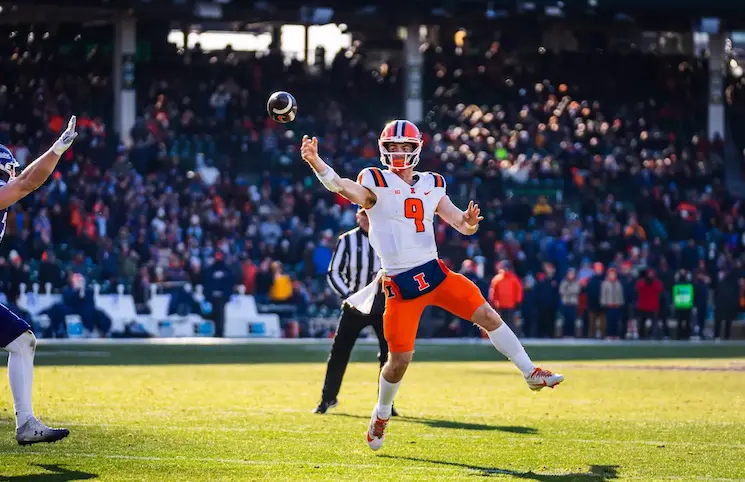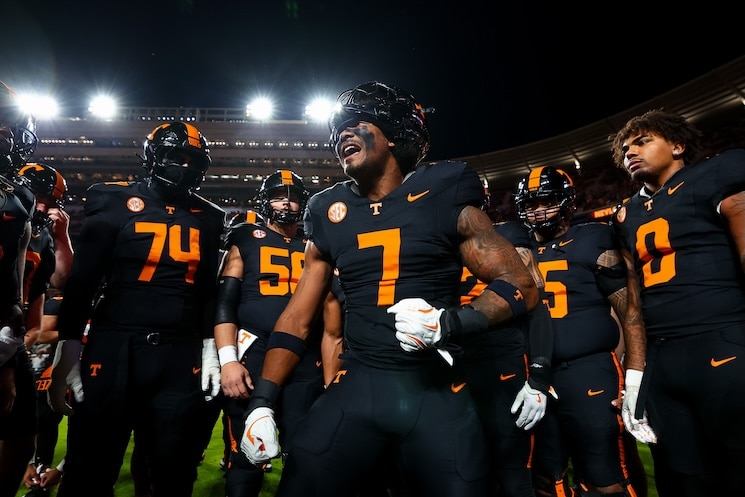
When Jeremy Pruitt was hired away from Alabama to be Tennessee’s next head coach, Vol fans were hopeful that his strong track record as a defensive coordinator at Alabama, Georgia, and Florida State would bode well for the Vols’ defense. Fans hoped that Pruitt and his defensive staff could come in and fix UT’s defensive woes.
And there was a lot to fix.
In 2016 and 2017, Tennessee’s defense ranked in the bottom five of the SEC in total yards allowed, and the Vols were 11th and dead last in rushing yards allowed among SEC schools in those years, respectively. The Vols gave up nearly 30 points a game in both seasons, and Tennessee had the second-lowest sack total (22) and third-lowest takeaway total (15) among SEC teams in 2017. Tennessee’s third down defense was also the second-worst in the SEC, allowing teams to convert 45.2 percent of the time on third down.
Suffice it to say, Pruitt had his work cut out for him. And despite the overall lack of developed talent and the injury history with UT’s defensive players, the Vols showed improvement on the defensive side of the ball in a number of areas in Pruitt’s first year in 2018.
Tennessee showed slight to noticeable improvement in points allowed, total yards allowed, rushing yards allowed, third down defense, and sack totals in 2018. But the improvement wasn’t enough to help the Vols do better than a 5-7 record, and UT was still routinely torched by potent offenses.
With another year of experience for young players and a new influx of talented newcomers, hopes were high for Tennessee’s defense to start the 2019 season. But those hopes were shot to the ground at the beginning of the season.
The Vols gave up an average of 36 points and 414.5 yards to the four FBS teams they faced to start the season (Georgia State, BYU, Florida, and Georgia). All four of those games resulted in losses, and while Tennessee’s offense also deserves a lot of the blame for those defeats, the defense wasn’t exactly doing its part.
But Tennessee’s 20-10 win over Mississippi State served as a turning point not only for the entire team in general, but for the defense specifically.
From that point on, the Vols’ defense never gave up more than 400 yards of offense to an opponent, and Alabama’s 35 points (28 of which were scored by the offense) were the most points UT allowed in their final eight games of the season.
Over the last eight games of the 2019 season, Tennessee gave up an average of 17.3 points and 307.9 yards a game. In their first four games of the year against FBS teams, UT was giving up 5.96 yards per play. In their final eight games, the Vols allowed just 4.74 yards a play.

Granted, the overall quality of offense by Tennessee’s opponents dropped over the last eight games of the season compared to the first five games of the year, but the results still speak for themselves; the Vols’ defense, even with a whole new defensive line, improved significantly in 2019.
That begs the question: Has Jeremy Pruitt’s defensive system finally set in at Tennessee?
I looked at 20 different defensive statistical categories across both the 2018 and 2019 seasons, and Tennessee showed slight to major improvement in all but two of those areas from Pruitt’s first year to his second year.
Tennessee’s yards allowed per game dropped by 42.9 yards a game from 2018 to 2019, and their yards per play allowed dropped two-thirds of a yard, going from 5.67 allowed in 2018 to just 5.01 allowed in 2019. The Vols’ pass defense went from giving up 222.9 yards a game in 2018 to allowing 194 yards through the air in 2019.
The Vols also saw improvement in opponent completion percentage (a difference of 5.4%) and yards allowed per rush (a difference of 0.44 yards a carry). Tennessee also gave up less points overall, allowing 6.2 fewer points per game in 2019 than 2018, and they cut the number of passing touchdowns allowed significantly (from 21 in 2018 to 14 in 2019).
UT’s red zone defense, both overall and in regards to percentage of red zone possessions ending in touchdowns, also showed improvement. The Vols increased their sack total by nine, their tackles for loss total by three, and their takeaway total by four. Tennessee was also the best in the SEC at not giving up huge plays, as their total of 10 plays allowed of 30 or more yards were the fewest in the conference and halved their total in 2018 (20).
The only two areas that saw regression for Tennessee was their third down defense and number of 10-plus yard plays allowed. The Vols’ third down defense dipped slightly, worsening by 1.12 percent. Tennessee also allowed 12 more plays of 10 or more yards to opponents.
But when you factor in the fact that UT gave up 69 more plays to opponents in 2019 than 2018 — chiefly because the Vols made it to a bowl game and played an extra game compared to 2018 — then some of that can be excused.
One could argue that Tennessee’s defensive improvement was more a byproduct of UT’s 2019 schedule featuring weaker overall offenses than the 2018 season. While that seems true on the surface, the actual numbers don’t back that up as much as you might think.
In 2018, Tennessee faced six offenses ranked in the top 50 of the FBS in points per game and six offenses ranked in the top 50 in yards per game. Conversely, UT also faced four offenses ranked in the bottom 50 in yards per game and three offenses in the bottom 50 in points per game.
This past season, the Vols went up against five offenses ranked in the top 50 in yards per game and points per game, and they faced four offenses in the bottom 50 in both categories.
In terms of national rankings, the bad offenses UT faced in 2018 were actually worse than the ones Tennessee faced in 2019. The average ranking of the bottom 50 offenses the Vols faced in 2018 were 108.7 in points scored and 106.3 in yards totaled. In 2019, those averages were 106th and 104th, respectively.

The big difference, however, was that Tennessee faced more truly “elite” offenses in 2018.
Tennessee went up against five offenses ranked inside the top 25 in points per game and four ranked in the top 25 in yards per game in 2018. This past season, Alabama was the only team ranked in the top 25 in both categories that UT faced, with every other top-50 offense ranking somewhere between 28th and 49th in both categories.
So, was Tennessee’s defensive improvement more because of their adjustment to Pruitt’s defensive system or more because of a drop-off in elite offenses?
The answer is probably somewhere in the middle, but the Vols’ improved play on defense in Pruitt’s second year can’t merely be cast aside as the byproduct of a weaker schedule; there was actual improvement in play in a number of areas, and Tennessee returns a ton of those pieces from last year’s defense to 2020.
While the Vols must replace the production of leading sacker Darrell Taylor, leading tackler Daniel Bituli, and leading interceptor Nigel Warrior, UT returns all of their starters and rotational players from the defensive line, both starting outside cornerbacks, their starting nickelback, a trio of capable safeties, and several linebackers, most notably Henry To’o To’o.
Early analytics are already suggesting that Tennessee’s 2020 defense could be one of the best in the SEC and one of the top defenses in the country. If last year’s improvement is any indication, and if it’s true that Pruitt’s system has set in, then those projections could absolutely come true.



